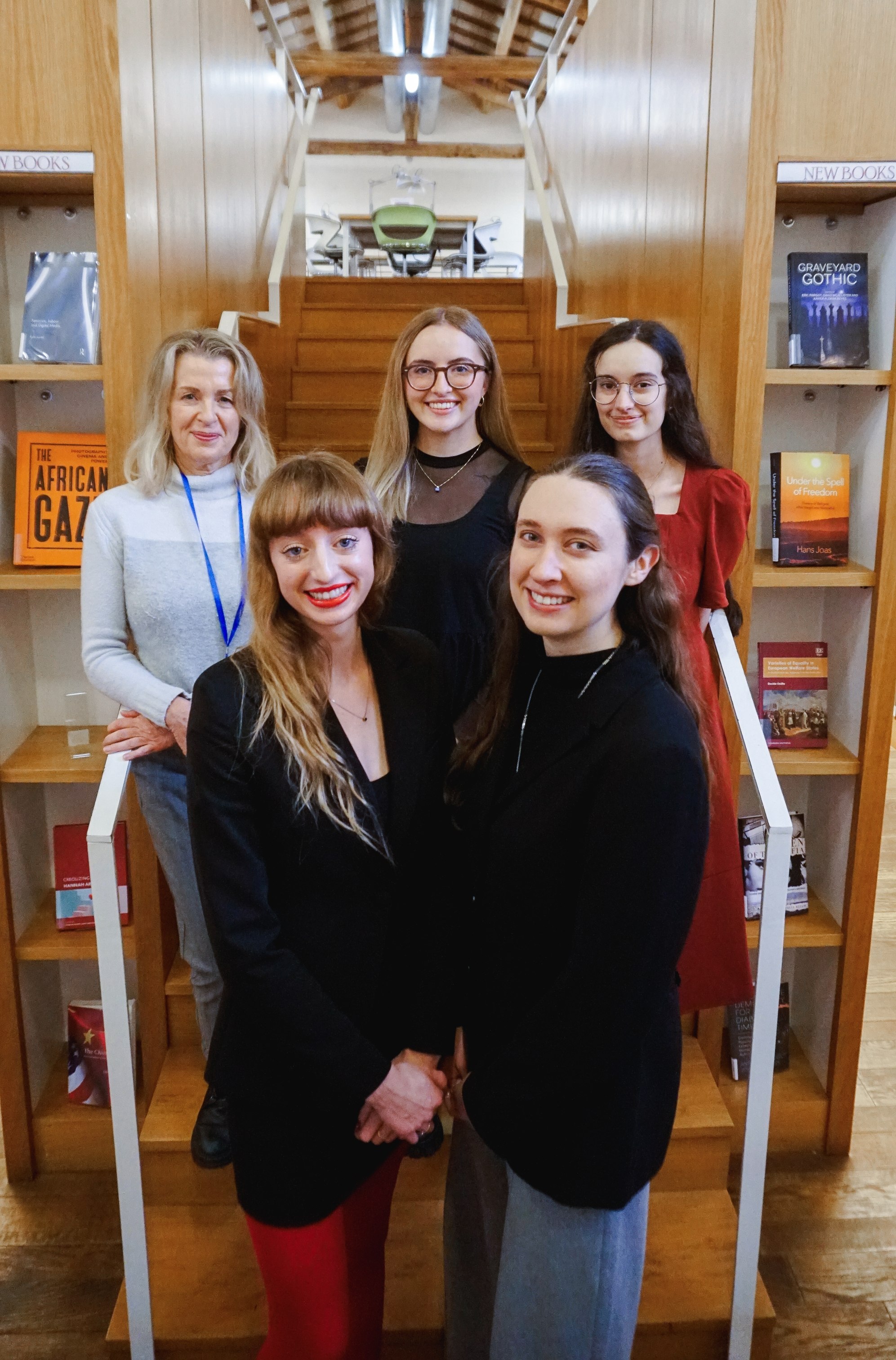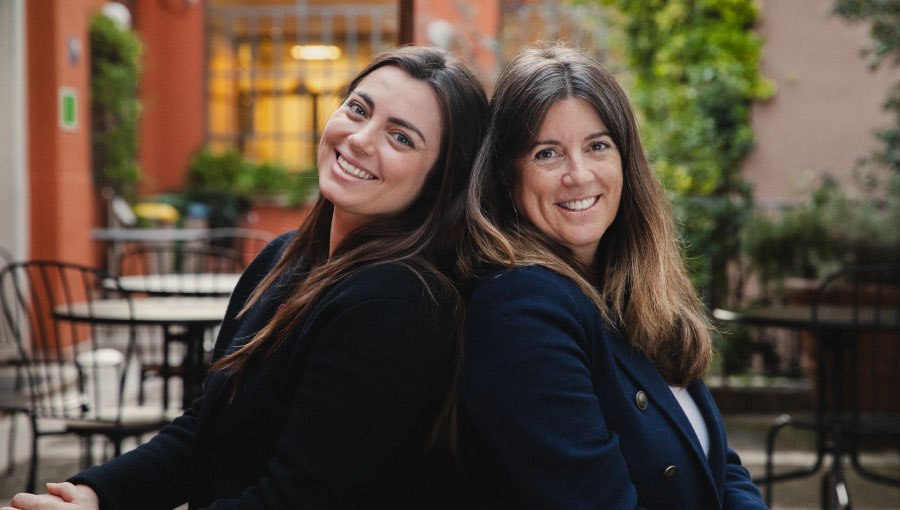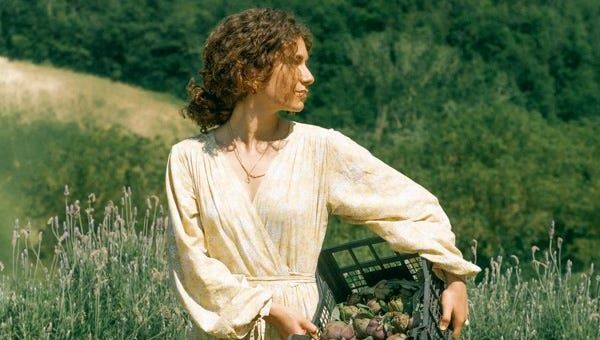Art History MA Students Present Their Theses
On Friday and Saturday, December 13th and 14th, John Cabot University’s candidates for the Master of Arts in Art History presented their MA theses to the JCU community and guests. Students in the final phase of the MA program delivered their thesis research in the form of twenty-minute conference papers in the Aula Magna Regina, at the Guarini Campus. The papers were on varied and fascinating topics, ranging from early medieval Roman to interwar period art to papal tile pavements, and each added something substantial to the existing state of art-historical knowledge.

Amelia Lancaster
Amelia obtained her BA from Washington and Lee University, where she also worked as a museum assistant at the Reeves Museum of Ceramics. She then completed a curatorial internship in ceramics at the Art Museums of Colonial Williamsburg in Virginia. While at JCU, Amelia spent a semester working as a research assistant for an upcoming exhibition in Siena. In spring 2025, she will intern with Antichità Alberto di Castro, an art gallery in Rome.
In her thesis, titled One of the Most Celebrated Portraits in Rome: Nineteenth-Century Anglo-American Tourists and the Image of Beatrice Cenci, Amelia analyzed the “obsession” with what many in the 19th century believed to be a portrait of Rome’s famous 16th-century parricide. The face of Beatrice Cenci could be found in many souvenir prints, paintings, ceramics, and jewelry. Amelia’s thesis focuses on how Anglo-American tourists visiting Rome interacted with Beatrice Cenci’s supposed portrait.
Marina Litovchenko
Marina earned her Master’s degree in International Economics from Donetsk National University in Ukraine, and she completed a PhD in Economics. In 2017, Marina took the opportunity to pursue her passion for art and earned a BA at Lomonosov Moscow State University. She then obtained an MA in Arts and Culture Management from Rome Business School in 2021.
For her MA thesis, titled Sculpting Identity: Motherhood and the Search for Self in Raphaël’s Genesis Series, she conducted research on Antonietta Raphaël (1895-1975), an Italian artist of Jewish heritage and Lithuanian origin active in the interwar period. Her paper focused on the sculpture series called Genesis, devoted to maternity, which was stylistically opposed to the art of the fascist regime.
Jimena Abáigar de Villegas
Jimena graduated in 2022 from CEU San Pablo University in Madrid, where she earned the Extraordinary End of Career Award. She works at the Roman Archive of the Society of Jesus in Rome, and while at JCU she was Professor Sarah Linford‘s Teaching Intern on Modern and Contemporary Art. In 2025, she will begin her PhD in Italian and Spanish Jesuit contemporary art. She presented her research on Jesuit art and spirituality at several international conferences, in Spain, Italy, Poland, and Peru.
In her thesis, titled Archival Insights into the Borgia Oratory, Rome: Early Christian and Medieval Revivals in 1930s Jesuit Modernismo, Jimena analyzed the Borgia Oratory in the General Curia of the Society of Jesus in Rome, with Byzantine and romanesque revival ornamentation.
Virginia Kendall
Virginia graduated with a BA in Art History from the University of Dallas in 2023, where she also worked in the gallery and archives. At JCU, she specialized in the high medieval period. In the near future, she is hoping to undertake a year of independent study in Gotland, Sweden, and then begin her PhD.
Virginia’s thesis, titled Amiatine Illumination: Innovation and Process at the Scriptorium of San Salvatore on Monte Amiata, focuses on the transmission of stylistic ideas in 11th-century illuminated manuscripts in relation to the decoration of the manuscript of a biblical commentary from the abbey of San Salvatore at Monte Amiata, in Tuscany.
Kelsey Herber
Kelsey received her undergraduate degree in Art Education at Indiana University. After graduating, Kelsey taught visual arts and worked in museum settings. While at JCU, she completed an apprenticeship at the historic Studio Cassio mosaics studio in Rome.
Her thesis, titled Gifts of the True Cross: Politics, Women, and Legend in Early Medieval Rome, focuses on Empress Helena’s discovery of the True Cross in the early 4th century, which had significant global impact on religion and politics. Kelsey began her research focusing on two reliquaries of the True Cross, the Cross of Justin II and the Cross of Adaloald.
Ariel Valdiva
Ariel obtained her BA with a major in International Studies and a minor in Linguistics from Western Oregon University. After discovering her passion for Art History, she took courses on a post-baccalaureate basis while working full-time in university administration. As part of her coursework, she completed an internship at a local Benedictine monastery, and at JCU she was a teaching intern for Professor Laura Foster. She plans to apply for a PhD program.
Ariel’s thesis, titled Saints and Sitters: The Conflation of Identities in Renaissance Crypto-Portraiture, revolves around a painting, Portrait of a Woman in the Guise of Saint Margaret, by the Renaissance artist Giovanni Girolamo Savoldo. The painting is considered to be a crypto portrait, defined as any portrait where the sitter is depicted in the guise of someone else, for instance, a saint, which is the focus of Grace’s research.
Mackenzie McDonald
Mackenzie is from Reston, Virginia. She has a BA from the New York State College of Ceramics at Alfred University, where she worked as the Student Assistant to the Curator of Collections at the Alfred Ceramic Art Museum. Before coming to JCU, she worked at Ferrin Contemporary and the James Renwick Alliance for Craft in Washington D.C.
Mackanzie’s thesis, titled Floored! Papal Pavement Choices: 1492-1521, examines the marble and maiolica tile pavements chosen by Popes Alexander VI, Julius II, and Leo X for various public and private rooms within the Apostolic Palace. The decisive choice to pave palace rooms with maiolica tiles demonstrates how the elite was influenced by rapidly advancing globalization.
Sharon Lee Cowan
Sharon Lee earned her BA in Russian Language and Literature from Dartmouth College. She has worked with the United Nations Food and Agriculture Organization as head of corporate communication for Eastern Europe, the Caucasus, Russia, and Central Asia. At JCU, Sharon Lee developed a special interest in tracing how international relationships and events affected Early Modern art in Italy.
Her thesis, titled Meltdown: Material losses of the church of S. Agostino in the 1527 Sack of Rome, focuses on the production of the now-rare siege coins of Pope Clement VII, obtained from smelting down the sacred silver of Roman churches, during the Sack of Rome in 1527. Sharon Lee used the church of S. Agostino in Campo Marzio as a case study.





